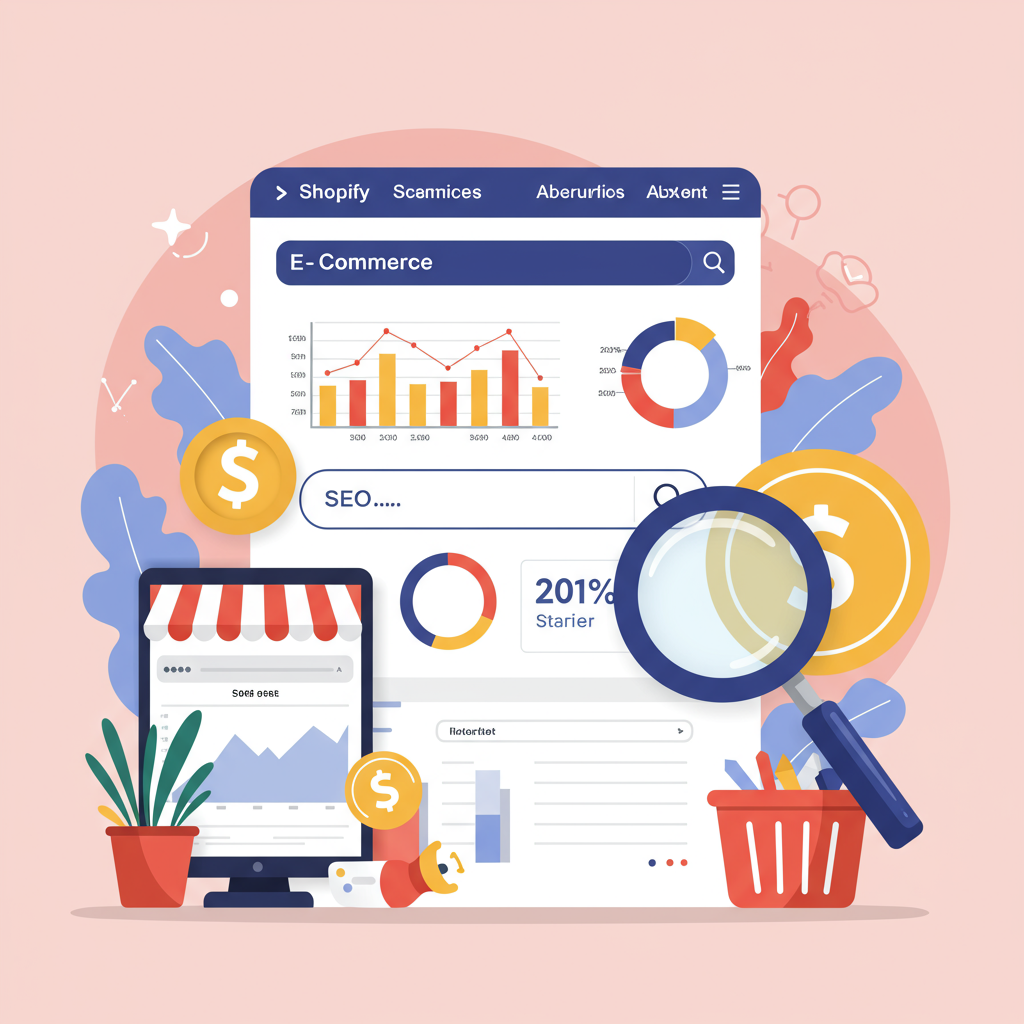Navigating the Evolving Landscape of E-commerce Search Visibility
Welcome, fellow Shopify merchants! As we step into 2026, the digital landscape continues its rapid evolution, making search engine optimization more critical than ever for your online store’s success.
I’ve put together this comprehensive guide to help you not just survive, but thrive, in the competitive world of e-commerce. This isn’t just about getting traffic; it’s about attracting the *right* traffic.
My goal is to provide you with an actionable Shopify SEO checklist, ensuring your store is optimized for the search engines of today and tomorrow. Let’s dive into what you need to focus on.
First on our list is robust keyword research. In 2026, it’s no longer just about high-volume keywords. We need to think deeply about user intent.
Are your potential customers looking to buy, research, or compare? Understanding their journey helps us target the most effective long-tail keywords.
Utilize tools like Google Keyword Planner, Ahrefs, or Semrush to uncover these gems. Look for keywords with commercial intent, even if their search volume seems lower.
Don’t forget about voice search optimization. People are increasingly using natural language queries, so integrate conversational keywords into your content.
Next, let’s talk about on-page SEO, which is where much of your direct optimization efforts will lie within Shopify. This includes optimizing your product pages, collection pages, and blog posts.
For product pages, ensure your product titles are descriptive and include your primary keyword. Think about what a customer would type into Google.
Your product descriptions should be unique, engaging, and keyword-rich, but always written for the human reader first. Avoid generic manufacturer descriptions.
Use high-quality images and optimize their alt text with relevant keywords. This helps search engines understand your images and improves accessibility.
Collection pages are equally important. Optimize their titles, descriptions, and even the introductory text to target broader category keywords.
Don’t underestimate the power of a well-maintained Shopify blog. It’s your content marketing hub, allowing you to target informational keywords and build authority.
Every page on your Shopify store needs a compelling meta title and meta description. These are your storefronts in the search results.
Craft them to be concise, include your main keyword, and entice users to click. Remember, they don’t directly impact ranking as much as click-through rate.
Structured data, or schema markup, is another crucial element. Shopify themes often have some built-in, but you might need an app or custom code for more advanced implementation.
This markup helps search engines understand the context of your content, leading to rich snippets like star ratings, prices, and availability directly in search results.
Moving onto technical SEO, which ensures search engines can easily crawl, index, and understand your Shopify store. Site speed is paramount in 2026.
Google prioritizes fast-loading websites. Optimize your images, use a fast-loading theme, and consider apps that help with caching and script optimization.
Your Shopify store must be mobile-friendly. With the majority of traffic coming from mobile devices, a responsive design is non-negotiable. Google’s mobile-first indexing means this is critical.
Ensure your sitemap.xml is up-to-date and submitted to Google Search Console. This helps search engines discover all your important pages.
Regularly check for and fix broken links (404 errors) on your site. These create a poor user experience and can negatively impact your SEO.
Implement canonical tags correctly, especially if you have product variations or similar content, to prevent duplicate content issues. Shopify handles many of these automatically, but it’s good to be aware.
Off-page SEO is about building your store’s authority and reputation across the web. The most significant factor here is backlinks.
Seek high-quality backlinks from reputable websites in your niche. This can be through guest blogging, partnerships, or creating shareable content.
Social media signals, while not direct ranking factors, contribute to brand visibility and can drive traffic, which indirectly benefits SEO.
For local businesses, optimize your Google Business Profile. Even if you’re primarily online, local searches can drive significant traffic.
Content marketing extends beyond just blogging. Consider video content, infographics, and user-generated content (UGC) like customer reviews and testimonials.
UGC not only provides fresh content but also builds trust and social proof, which are increasingly important for SEO and conversions.
User experience (UX) is intrinsically linked to SEO. A positive UX leads to lower bounce rates, longer dwell times, and higher engagement – all signals Google values.
Ensure easy navigation, clear calls to action, and a seamless checkout process. Think about your customer’s journey from discovery to purchase.
Regularly monitor your performance using Google Analytics and Google Search Console. Track your keyword rankings, organic traffic, and conversion rates.
Identify pages that are performing well and those that need improvement. Use this data to refine your SEO strategy continuously.
As we look to 2026, AI’s role in SEO is growing. While not a direct ranking factor, AI tools can assist with content creation, keyword analysis, and even technical audits.
Shopify’s app store offers numerous SEO apps that can help automate tasks, provide audits, and manage meta tags. Research and choose reputable ones that align with your needs.
Remember, SEO is an ongoing process, not a one-time task. The algorithms are constantly evolving, so staying informed is key.
What do you think about this comprehensive Shopify SEO checklist for 2026? I’d love to hear your thoughts and any strategies you’ve found particularly effective!
By diligently applying these strategies, you’ll significantly improve your Shopify store’s visibility, attract more qualified traffic, and ultimately boost your sales.
Here’s to a successful 2026 for your e-commerce venture! Keep optimizing, keep learning, and keep growing.






